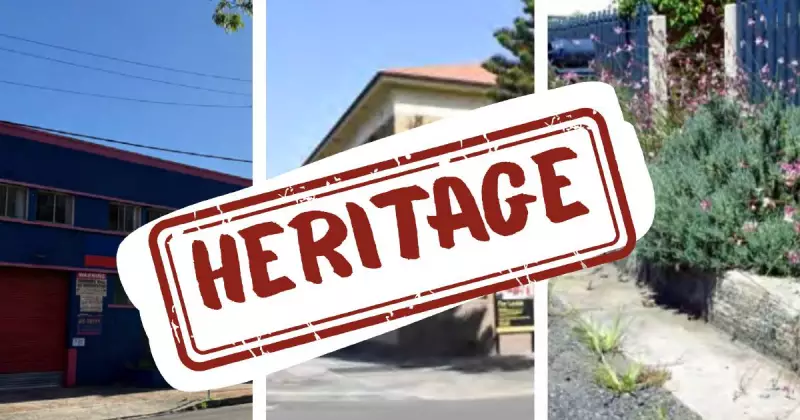
Wollongong City Council has unveiled plans to grant heritage protection to fifteen significant local sites across the region, adding to the existing collection of over 490 locally listed heritage items.
Diverse Sites Under Consideration
The proposed listings span various locations and historical periods, from sandstone kerb and guttering in Helensburgh to a former bank building in Port Kembla. According to council business papers from Monday night's meeting, any future alterations to these sites would need to be sympathetic to their heritage significance, though the listings don't affect ownership rights or require private owners to undertake conservation works.
In Helensburgh, the sandstone infrastructure along Sawan Lane, Parkes Street, Tunnel Road and Walker Street has been identified as historically important. Council documents describe this sandstone kerbing and guttering as significant for its historical, aesthetic, social and technical qualities, representing quality public works from the late 19th and early 20th centuries that are now rare in the local government area.
Cultural and Community Significance
The St John Vianney Cathedral in Cabbage Tree Lane at Fairy Meadow holds particular importance for the Italian migrant community. Council papers state the cathedral represents the aspirations of Italian migrants to Wollongong in the postwar period and serves as a good example of a church built by a community with a large Italian migrant population.
Port Kembla features prominently on the list with several buildings, including a structure on the corner of Wentworth and Allan streets that previously operated as a bank. This building illustrates Port Kembla's former importance as a commercial and economic hub from the 1910s until the 1960s and demonstrates the application of stripped art deco style in the local area.
Other Port Kembla sites include commercial buildings at 117-119 Wentworth Street, Central Chambers, Kembla Court, and a former migrant boarding house at the northern end of the street. The boarding house represents adaptive reuse of buildings for migrant accommodation and has associations with the community of migrants who began their Australian lives there before integrating into Wollongong's economic and cultural life.
Community Nominations and Industrial Heritage
The Coledale RSL Club earned its place on the list through community nomination for its historical, associative, aesthetic and social values. Council documents note the club's social importance to local residents as a gathering place and its associations with returned servicemen.
In central Wollongong, four current or former homes have been included, along with the Salvation Army premises on Ellen Street. This building previously housed the Crystal Clothing factory, which operated from 1942 until its closure in 1990. The factory represents numerous clothing establishments created in the post-World War II period to decentralise industry and provide employment for women who came to Wollongong with their families, while men found work in heavy metals and coal mining industries.
This heritage listing initiative forms part of a broader planning proposal seeking changes to the Wollongong Local Environment Plan. The proposal will be sent to the state Planning Department and, if approved, will be placed on public exhibition for at least 28 days, allowing community input on the proposed protections.





